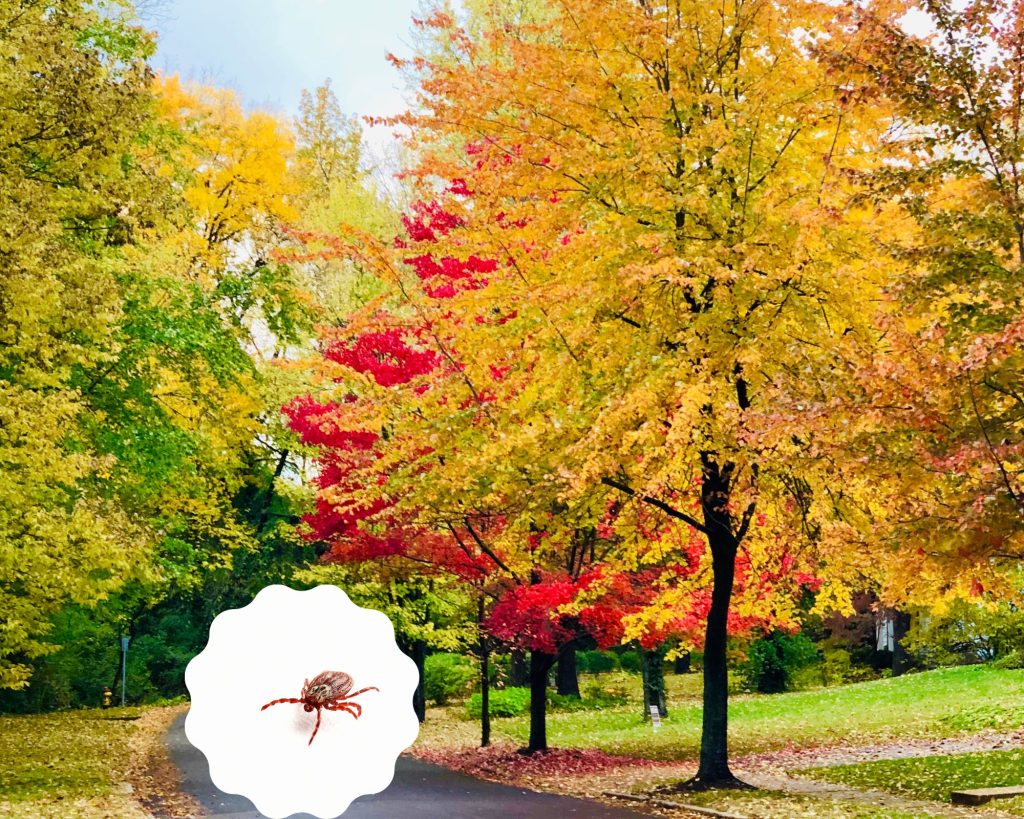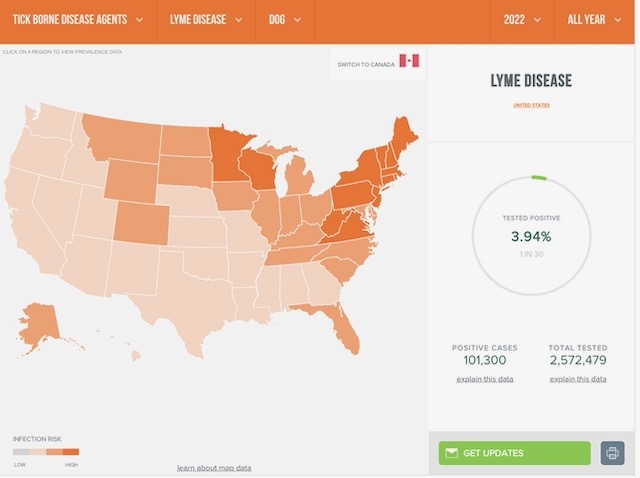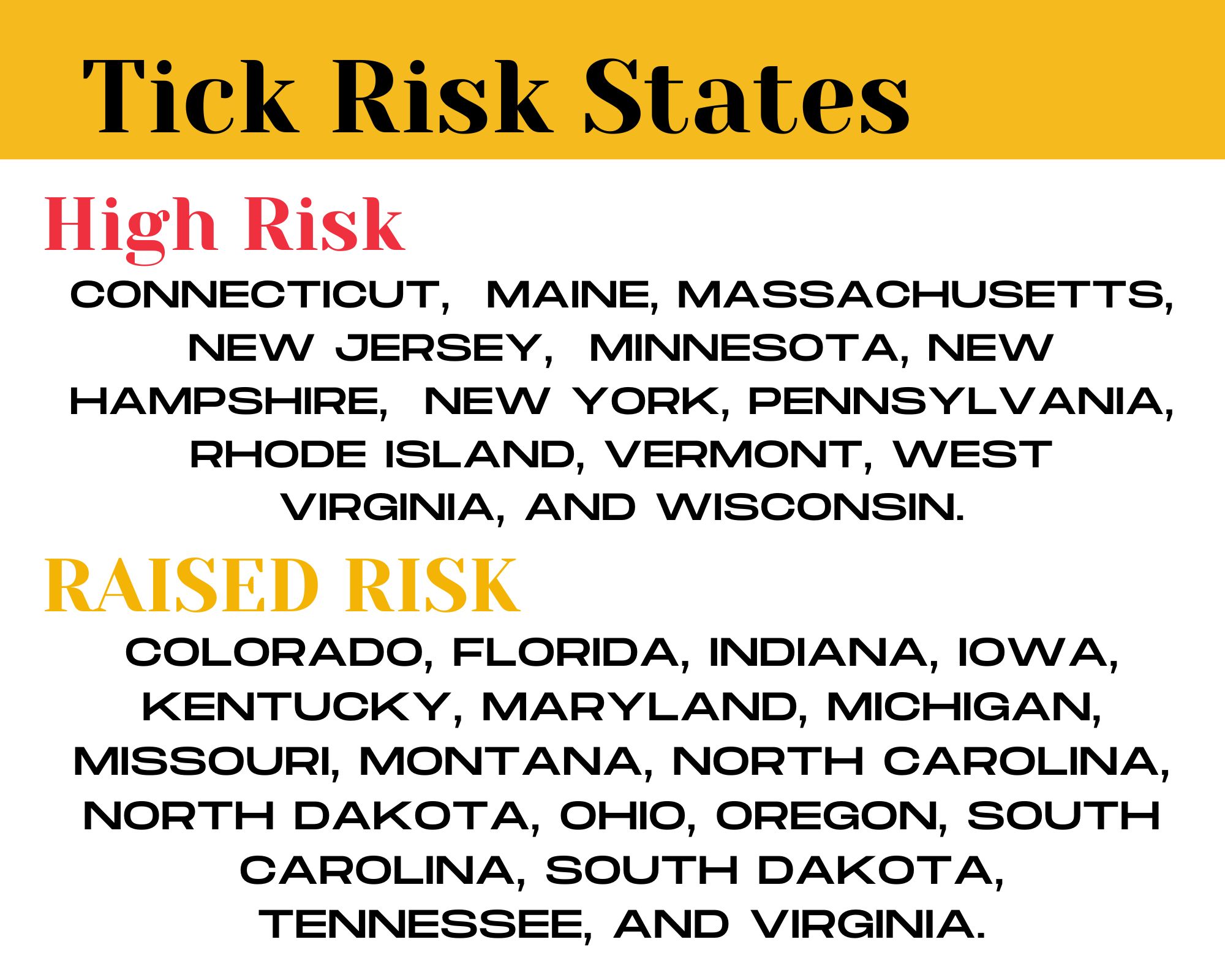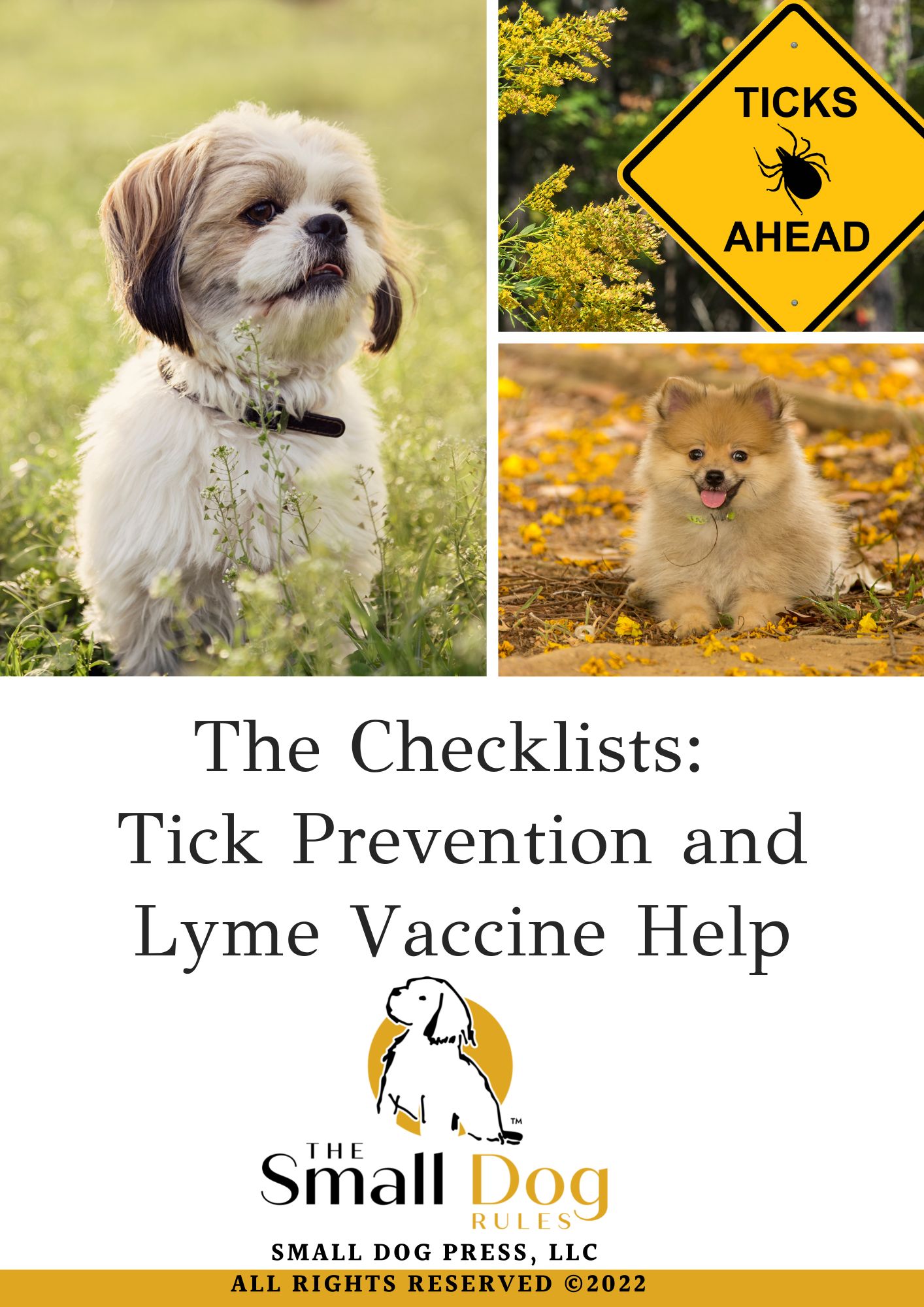
(3 minute read: 900 words). Updated Data and Links for 2023.
Are ticks active during fall and winter months?
Here on the East Coast, adult ticks actually become a problem after the first frost. In fact, we can count on seeing deer ticks throughout the winter when there’s no snow cover.
So, we must be just as watchful for ticks in the fall and winter as we are in the spring and summer months.
But apparently, we forget about tick checks once the weather gets cooler. As a result, ticks imbed themselves in our dogs and feed long enough to transmit Lyme disease and other disgusting tick-borne illnesses.
How do we know we pet owners become a bit lax about ticks during fall and winter months? Well, we can thank ourselves and a growing field of research called “Citizen Science.”
Citizen Science Says We Need to Check for Ticks in Fall and Winter
Citizen science is so smart. By gathering pictures taken by dog owners who’d found ticks munching on their pups, researchers discovered something pretty shocking.
In colder months, it often takes us two and a half days (!) before we notice an imbedded tick on our dogs.

That’s a virtual guarantee that any illness the little vermin carries will find its way into your small dog’s bloodstream. Once that virus is inside your pup, it can cause diseases that range from causing mild symptoms to permanent damage.
Why does it take us so long to find ticks on our pups?

Researchers guess that pet owners mistakenly think fall and winter aren’t tick seasons. So, we either don’t check for ticks or we stop bothering with any tick preventative we might use in the spring and summer. If you’re interested in reading the details of this important study, I’ve linked it here.
Real-Time Tick Risk 2023

What’s the 2023 Tick Risk in the Northeast, Midwest, and Atlantic States?
The Companion Animal Parasite Council (CAPC) maintains a phenomenal resource answering just that question. Their site has up-to-the-minute data on your dog’s risk for contracting Lyme, heartworm, intestinal parasites, and viral diseases.
We strongly suggest subscribing to their monthly report, which brings you the current data on parasite dangers, personalized for your geographic area. The maps even give you precise Lyme diagnosis case numbers in your particular county and state.
A brief look at this year’s August map shows high risk of Lyme infection in thirteen states (that’s up from twelve states in 2022). In another seventeen states, pups have a markedly increased risk.
In other words, over half the country should be very careful about ticks and Lyme all year round.

Where Are Deer Ticks Most Likely to Attach to Our Dogs?

Nearly every website discussing where to find ticks on your dog will list:
In our experience, deer ticks like to attach to a small dog’s head. I’ve read two explanations for this tendency of ticks to move to the head: one, because the skin there is thinner and there’s a ready supply of blood and two, because dogs tend to have their noses to the ground (and small dogs are closer to the ground all around), so it’s easy for ticks to hop on at the head.
We’ve even found one trying to attach on a lower eyelid. Just, ugh.
How To Check for Ticks During Fall and Winter
Just as in spring and summer, checking for ticks in colder months requires careful and systematic checking of the likely places ticks attach and then rechecking every couple of hours. We’ve gathered some great tips and tricks in our Checklists for Small Dog Tick Bite Prevention and Lyme Vaccine Precautions.
A Quick Note on Lyme Vaccine Safety in Small Dogs
Some of you may worry less about ticks because your pup is vaccinated against Lyme disease. But Lyme vaccines are not an option for us. I wrote about Scout’s Lyme vaccine reaction back in 2020, and I updated the article again this spring. Our problem lies in the fact that small dogs are more likely to have adverse reactions to vaccines, and Scout happened to be one of the unlucky ones with just such a reaction. The article linked in this paragraph goes into the research and provides you with additional links to position statements by major veterinary organizations regarding the vaccine’s safety.

Again, if you’d like a handy reference tool for all things ticks and small dogs, do download our updated Checklists for Small Dog Tick Bite Prevention and Lyme Vaccine Precautions. And, you might want to re-read our article on Scouty’s experience with the Lyme Vaccine.
Let’s Lobby for Better Vaccine Safety for Small Dogs
It would be nice if vaccine researchers paid closer attention to small dog vaccine reactions. However, they don’t seem to bother, as in a 2020 Lyme Vaccine study where they bragged about the low vaccine “adverse events” but didn’t report those events by breed or size. When we find more time, we’ll want to lobby for research focusing on appropriate dosing for small dogs.

DIY Quick Tick Kit
I’ve put together our list of must-have items we call our “Tick Kit,” designed to help prevent chase ticks away in the first place and to deal with them if they break our barriers. Remember, if you shop through our links, we earn a small commission from Amazon at no cost to you, and we appreciate your support!
You’ll Also Love
Leave a Reply
Your email address will not be published.




